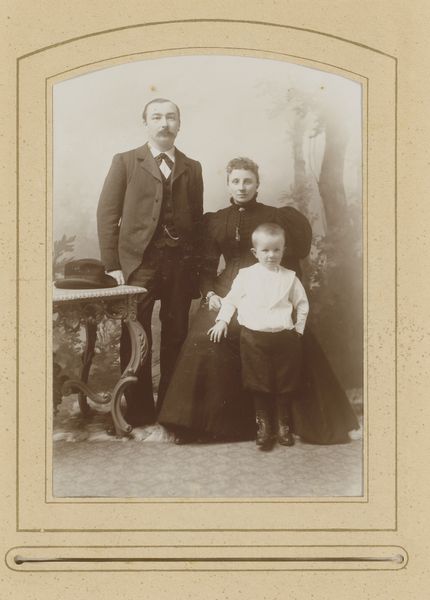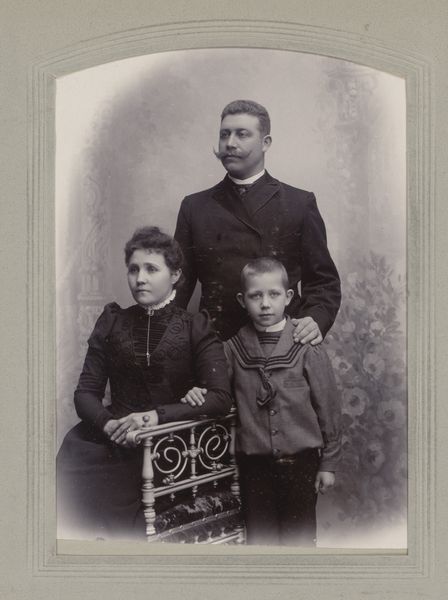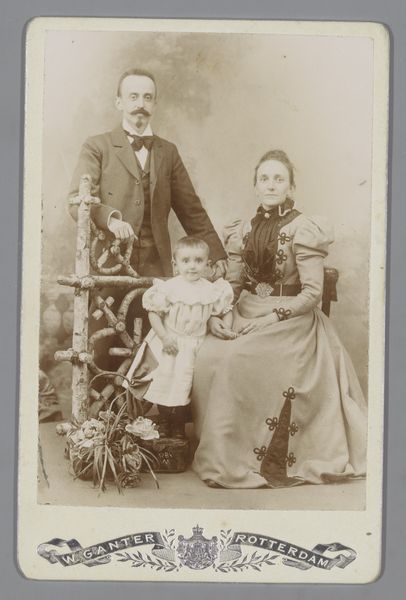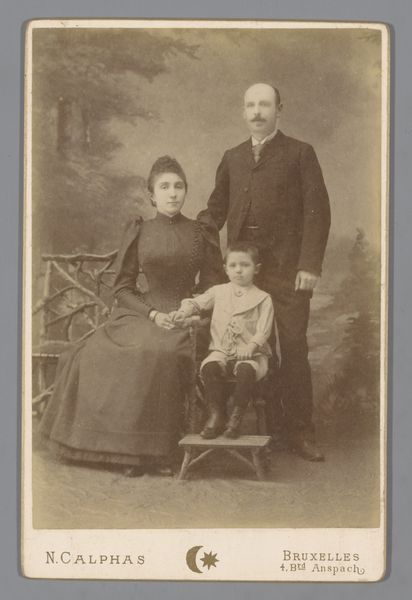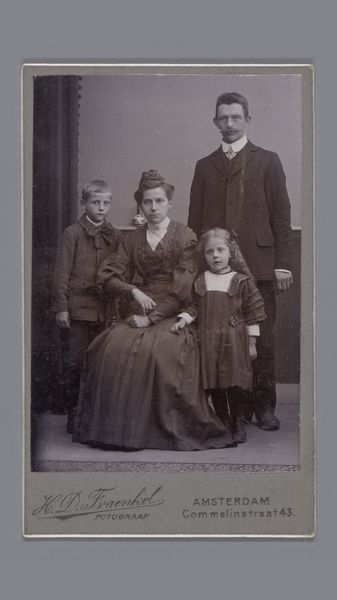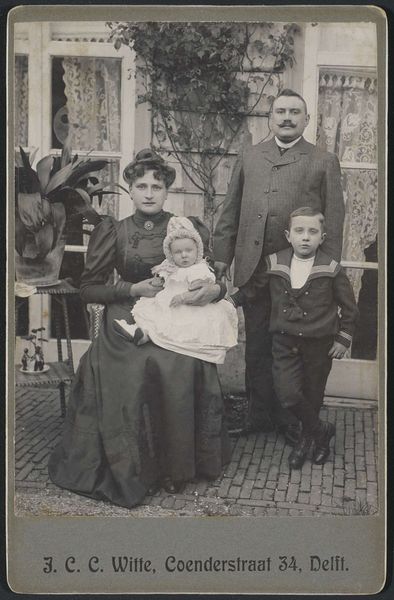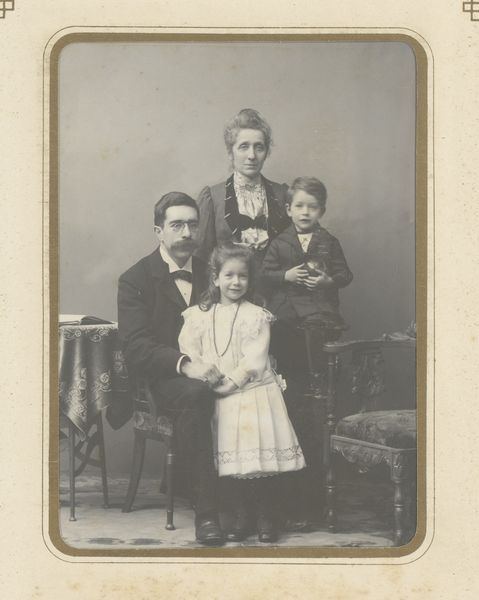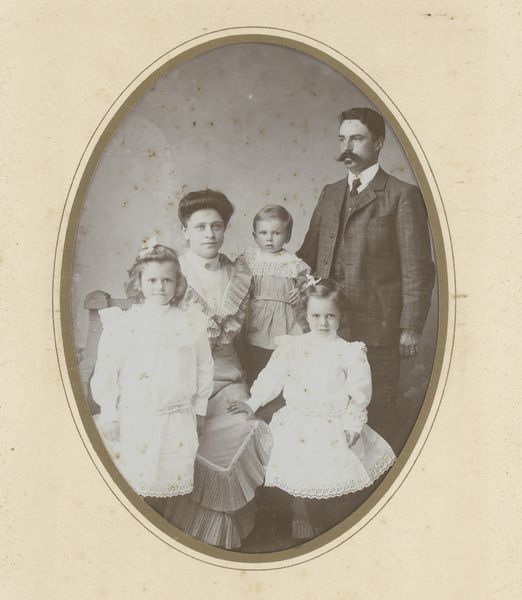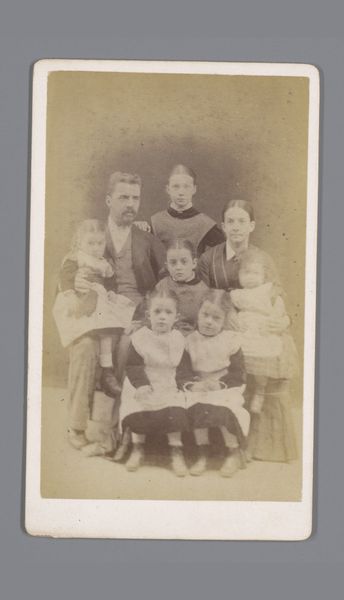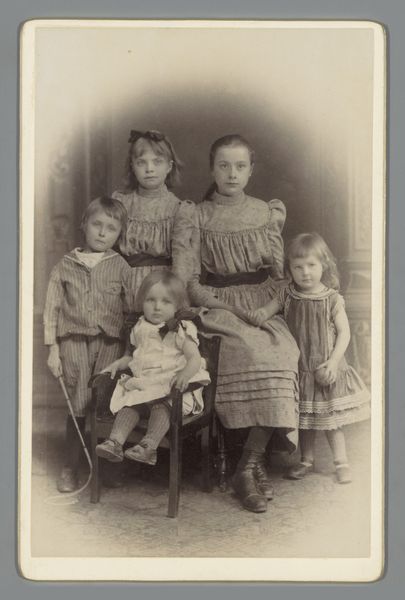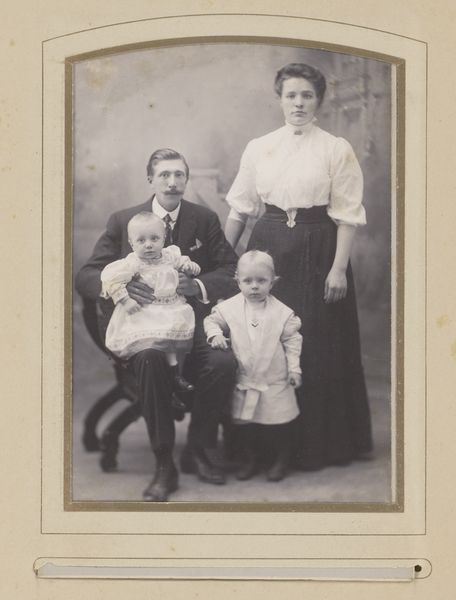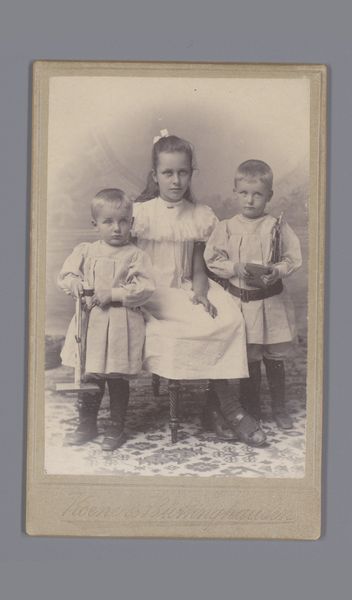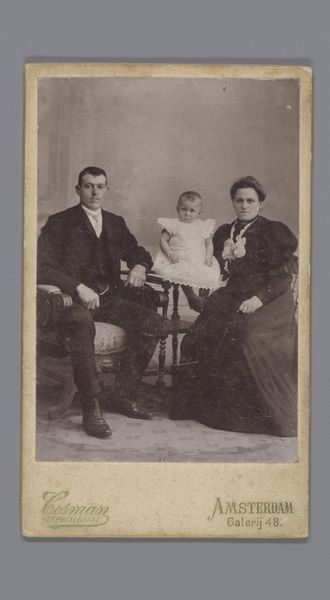
photography
#
portrait
#
pictorialism
#
archive photography
#
photography
#
historical photography
#
historical fashion
#
19th century
#
genre-painting
Dimensions: height 145 mm, width 99 mm
Copyright: Rijks Museum: Open Domain
Curator: Looking at this photographic portrait of an unknown family from circa 1875 to 1890 by R. Przibill, I'm immediately struck by its stillness. It's a constructed image, and you feel that acutely. Editor: Yes, a stiffness permeates it, doesn't it? The parents look so reserved, almost mournful, while the children project an unease. The staged setting only enhances the mood of constraint. How did the emergent photographic processes contribute to this phenomenon of composed identity in the 19th century? Curator: Certainly, the materiality of photography plays a significant role here. The slow exposure times of that era dictated the subjects' postures. Think of the physical act of holding still, how it demanded a particular kind of bodily control, transforming individuals into constructed subjects for the photographic lens. Editor: That physical act becomes a social performance when situated within its cultural context. The clothing alone—the mother's dark, voluminous dress, the daughter's patterned fabric, the boy in his sailor suit, the father's confident suit and bowtie— speaks volumes about middle-class aspirations and societal expectations of how families should present themselves in late 19th-century Europe. The social construct and visual language within which this family operates are impossible to ignore. Curator: And it wasn't just about the attire. Consider the backdrops used in these studio settings—the carefully positioned props. These elements were readily available; one studio's backdrop may become another's, which brings to light questions around mass production, artistic skill, and the consumption patterns of a growing middle class. How does this all fold into the evolution of portraiture during this era? Editor: Exactly. These portraits became affordable means for social mobility and acceptance; everyone aimed to adopt this dignified look. Examining the photograph as a commodity helps reveal social and cultural aspirations while highlighting a broader conversation around identity, status, and even the psychological effects of constant self-representation. Curator: Seeing this through both the lens of its making and its cultural context makes this image far richer. Editor: Agreed. It highlights the layered interplay of social ideals and their visual representation.
Comments
No comments
Be the first to comment and join the conversation on the ultimate creative platform.
